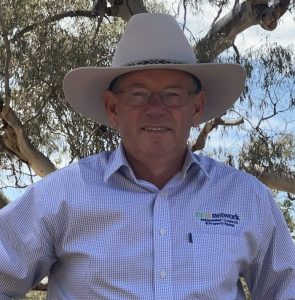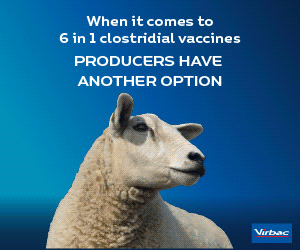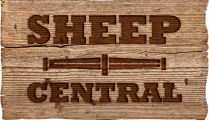
RMA Network CEO Chris Howie.
Sheep industry confidence is low
Not since 1991 have I seen such a despondent view of the sheep industry. With the seasonal conditions in the south, the election putting the final nail in the live export ban, several banks actively directing farmers towards continuous cropping and divesting livestock, cost of shearing and a change in attitude towards working with sheep we need to create some positivity.
Speaking to a number of agents, processors and producers through SA, Victoria and NSW all have identified that quality lambs are short and many ewes have been sold due to season for good money.
The current processor demand for mutton has created a positive value return when selling and as normal when quality lambs are short a back fill supply for processors. Mutton has always been a volatile market and can move in a week if lamb supply lifts. Even at current prices, we have seen a couple of significant price holes appear in the spot market that have left agents and producers wondering what happened. The difference this time is a couple of orders that have appeared, especially one Chinese order. Looking from the outside in, it seems several processors are prepared to pay over the odds to capture the lion’s share of this market. In turn, several traditional mutton buyers have seen the prices outside of what they can pay and have stepped out for a period. With winter still to come and very little sheep feed in the paddock I expect we have not seen the end of the mutton price surge. Again, I say weight is your friend and the heavier the better. Note: do not underestimate the impacted of elevated goat supply on the mutton market.
Move away from spot price reliance
When I raised replacement ewe prices after any form of break looking promising I was surprised that the majority of replies were “farmers were very cautious about buying back in.” This is a concern as so much of Australia is better suited to sheep than cropping or cattle. The main point behind this sentiment is what are prices going to do?
 For analytics on mutton and lamb Matt Dalgleish from Episode 3 has some very good articles, but from my old agency view there are a couple of thoughts. We must provide the lamb / sheep market the ability to move away from the transactional pricing structure we have had for ever in a consistent way. Firstly, producers need to pick the price they are prepared to accept, not hope for, and market towards that price instead of hoping “it will get better”. Not doing this is the main contributor to being trapped by a bad season – no exit plan. Secondly, to safeguard the future of the sheep and lamb industry for all concerned we need some form of price discovery further out than three or four weeks. It does not need to be exact, and it may have the ability to share the upside if the market kicks. Like the old basis contracts we once had for feeder cattle 25 years ago. Simple, not complicated like futures or swaps. Money and specification are known, delivery date determined, feed to meet specification, put them on the truck, repeat.
For analytics on mutton and lamb Matt Dalgleish from Episode 3 has some very good articles, but from my old agency view there are a couple of thoughts. We must provide the lamb / sheep market the ability to move away from the transactional pricing structure we have had for ever in a consistent way. Firstly, producers need to pick the price they are prepared to accept, not hope for, and market towards that price instead of hoping “it will get better”. Not doing this is the main contributor to being trapped by a bad season – no exit plan. Secondly, to safeguard the future of the sheep and lamb industry for all concerned we need some form of price discovery further out than three or four weeks. It does not need to be exact, and it may have the ability to share the upside if the market kicks. Like the old basis contracts we once had for feeder cattle 25 years ago. Simple, not complicated like futures or swaps. Money and specification are known, delivery date determined, feed to meet specification, put them on the truck, repeat.
Example. Basis for Merino lambs maybe $8.50 for August plus an extra 30 cents for second crosses. This methodology allows lambs to be fed towards the contract specification and also provides the vehicle to input a shared upside component. This form of contract could go out as far as anyone is prepared to offer. It must be an option because no one feeds cattle for 150–400 days without knowing what the end price will be.
Pick the winners
In my last article, I spoke of seeing young Luke Turnbull, Tom Groggin Station training for the Man from Snowy River Challenge a couple of years ago. Congratulations to the young fella who won the Junior Man from Snowy River Challenge this year riding Banjo.
It was also a bit of a giggle for the crowd with the re-enactment rewriting the famous poem. “The colt from Old Regret had joined the wild bush horses and then just buggered off – the end” Most of the runaways were found over the next week and we hope the re-enactment continues because it’s all about the stories.
Tips for young aspiring agents
Over the past three years, the enquiry for young people to enter stock and station agency as a career has really increased. With many stalwarts of industry heading towards retirement the succession discussion has become front of mind. Demand for those interested in the agency world covering all states, species and offerings is on the rise. With the advent of remote livestock administrative and accountancy tools it also provides a much simpler solution to starting your own agency.
Often it is only a simple call to find out who is looking for a new starter, auctioneer, administration or real estate member. Here’s a couple of tips. Make sure you are weaned and know how to live away from the family. Learn your trade away from your home town, it is easier to come back as an experienced stock agent, create a point of difference by developing what you are interested in, complete some study aligned to agency.
My Easter break, but dry in the south
Like most of Australia I took the Easter ANZAC break to catch some fish and have a stubbie. Lost the Murray Cod of a lifetime two metres from the bank. The words of my brother-in-law still ring in my ears just before the line rubbed through – “you need a bigger net.”
Season difference. Having driven from SA to Northern NSW via Corryong, Bathurst, Inverell and home via Dubbo and Hay. I have seen most of the main grazing areas. In short anything south of Bathurst is a range of dry to extremely ordinary by the time you get to Geelong, Mortlake, Warrnambool and all of South Australia. North of Bathurst the country just gets better and better. Mudgee to Gunnedah is a picture, with Barraba, Bingara and the Horton as good as I have seen. No real frost yet to turn the grass but plenty of crop in. One agent in Queensland said “you will run out of fuel before you run out of grass to look at.”
Beef cattle
Prices have been remarkably robust since January. The heifer job found another gear with a large pastoral order dominating late April in northern NSW with well-bred heifers in the $3.50-$3.75/kg lwt ranges. In turn, this saw heifer orders in the south lifting rates by 20 cents. Steers continued to track between $3.85 and $4.50 dependant on line size and quality. However, the continued dry in the south is now seeing a considerable surge of numbers with Wagga, Barnawartha, Ballarat, Yass, Mortlake and Mt Gambier all adding to the normal northern sale series. Several light weight orders for calves 150–250kg lwt have been hovering, but not activated, as prices remained too good. My thoughts are simple, weight of numbers will see the prices ease and these orders pull into gear. Agents at Inverell, Tamworth and Gunnedah have had enquiry for light calves for $550-$750 and they can handle numbers. In turn, the enquiry for cows and calves/PTIC cows is starting to appear. Marcus Bower, McCulloch agencies, Tamworth is one of many looking for units and PTIC females. As a thought, anyone in the north looking to improve genetics or age groups now is the time to consider hooking your mixed age cows.
Over the last week, we have seen steer prices soften by 20–40 cents, yet the well bred calves are still solid around $4. The upside is heifer orders have started to appear with an expectation the heifer price may be harshly dealt with on the back of numbers. Even though prices did ease, most quality heifers were still returning around $3/kg, a good investment.
Cow and calves. Speaking to Peter Gordon, livestock production advisor for Yenda Co-op, Griffith about the best avenue for cow and calf units in the current season. This is always a difficult discussion because the variables include investment in a breeding program, target market for the calf and cost of feed. Our discussion centred on feed cost. If a cow is only the factory, no emotional attachment, and she is worth $1000, if you tip $500 of hay into her she is still only worth $1000 unless something changes. However, if you tip the same investment into the calf at least you have an article with several sale options plus weight gain. My option would be keep the calf or sell the units and replace with a line of heifers that set you up for a herd improvement plus leaving a little money in the back and less expense to feed.
Tamworth Angus forum
I had the privilege of being asked to speak at the Angus forum in Tamworth. The investment by Angus Australia and the various studs is a credit to the breed. Being 27 years since the last time it was held in Australia the crowd was double what was originally anticipated. Stuart and Natalie Hann from Nampara Angus, Penola SA said the youth are really driving these forums and his own kids were the reason he invested in bringing his team to Tamworth. I saw this across all breeders and the international contingents that formed the core of this expo.
The speaker lineup also included processors acknowledging how the appetite for information by the producer has become extremely important. It is a very positive step in the livestock industry with the transparency that is appearing from processors when speaking about their businesses, supply and international demand. No better example was the delivery by JBS southern livestock manager Steve Chapman and northern livestock manager Edwin Cooke. In the past, the expectation was these sessions were quite guarded if agents or media were present.
The topics openly discussed made for an extremely interactive 90 minutes with past AMH/Swift big boss Ross Keane also providing some historical context to how some of the main beef orders into various countries were created and the loyalty of supply being very strong. My takeaway is we need to remove the adversarial nature of the various parts of the livestock industry and work together. We all need each other, and the election results mean we must be unified and positive in our approach to keep the livestock industry front of mind for government and safe from radical ill-informed decisions.
Start using the tools available
I know I have raised the topic of measuring your performance in kilograms in the past, but we really do need to get this base line into our program. The cattle and sheep industries at a producer level are the only part of agriculture remaining that still talk about the number of head sold versus the number of kilograms. The available technology through performance feedback such as MLA MyFeedback and Black Box Co combine with real time in paddock weighing systems like Optiweigh allow producers to manage outcomes much more closely. We all look at improvements to be made but an easy win is avoiding weight loss. When livestock go into weight decline it is normally three weeks before it is noticeable to the eye. In cattle, this equates to between 15 and 30kg. If identified at day one, the ability to manage or sell creates a net win for the producer. It’s so simple, but we need to be thinking in kilograms to make this happen.
I caught up with John Newton from Bindaree Beef at Inverell who I hadn’t seen for a number of years. When I was stationed at Inverell my focus was on supplying a heifer order to create a point of difference, whilst many of the other agents chased the steers. Bindaree have just released an Angus heifer feeder order that I think provides an excellent opportunity to create a simple background trade in the north with the southern season providing supply. In turn, the difficult season in the south has seen the supply of quality feeders, especially EU start to ease. Simon Rowe, Princess Royal feedlot at Burra and I first met in the early 90’s at the Gepps Cross calf sales. Me as a learner auctioneer and Simon as the calf buyer for T&R. Princess Royal is a major player in the EU feeder space, with a requirement of 1500 per week. Simple long-term relationships with people like John and Simon create fantastic opportunities for agents, producers and backgrounders that carry all the way back to the feature sales and stud breeders.
Opportunities
Cows and calves
Ewes and lambs
Plain mutton – short-term trade
PTIC cows
Store cows
Coloured heifers
Store lambs
Spare hay to sell

HAVE YOUR SAY